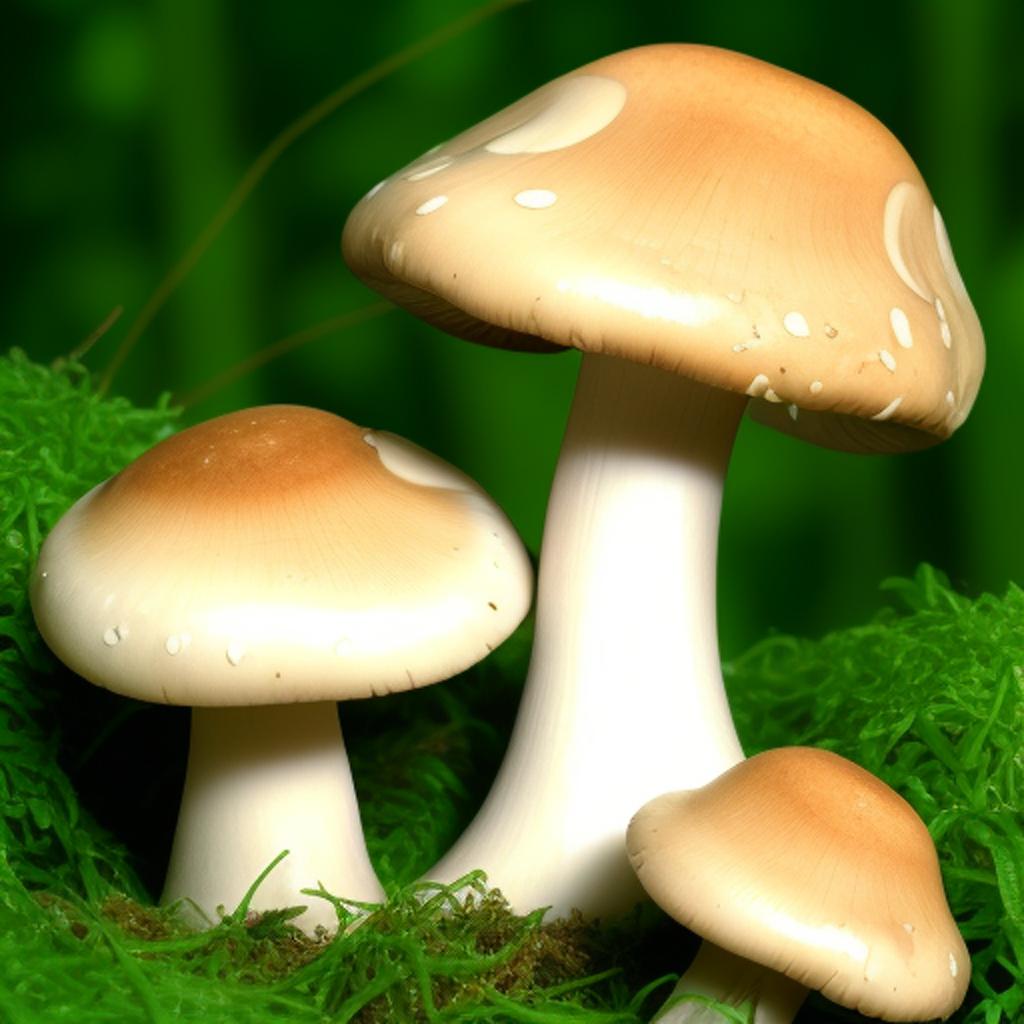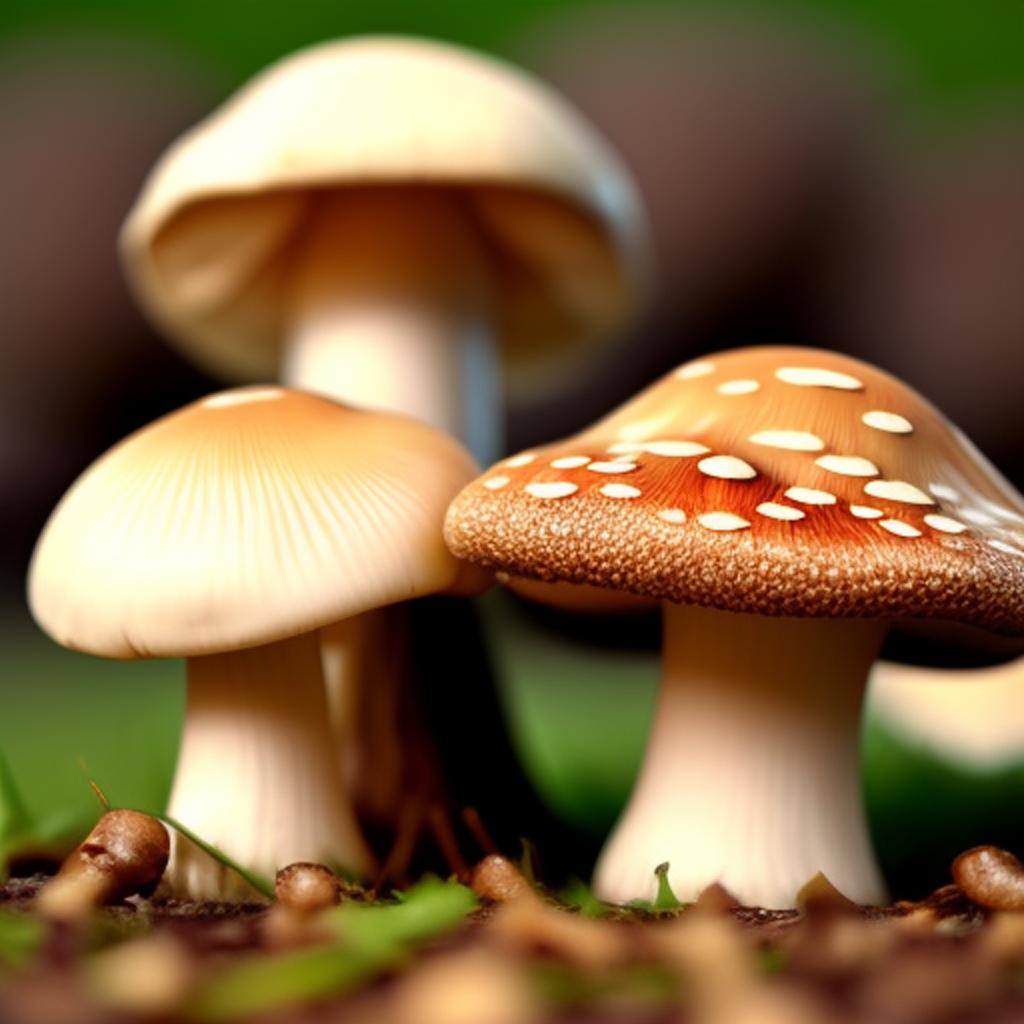Are you curious about how long mushroom spores last? Understanding the shelf life of mushroom spores is essential for successful cultivation. In this blog post, we will explore the factors that affect their longevity, typical shelf life, and tips to extend it. Whether you’re a seasoned cultivator or just starting your mushroom-growing journey, read on to discover valuable insights into the lifespan of these fascinating fungal organisms.
Factors Affecting the Shelf Life of Mushroom Spores
1. Storage Conditions: The way mushroom spores are stored plays a crucial role in their shelf life. It is essential to keep them in an airtight container, away from moisture and direct sunlight, as these factors can negatively impact their viability.
2. Contamination: Contamination is another factor that affects the longevity of mushroom spores. To ensure high-quality and long-lasting spores, it is important to prevent any form of contamination during storage by maintaining cleanliness and using proper sterilization techniques.
Storage Conditions
Storage Conditions are crucial for maintaining the viability of mushroom spores. Temperature and humidity play a significant role in preserving their quality. It is important to store spores in a cool and dry environment to prevent contamination and ensure longevity. Additionally, minimizing light exposure and ensuring proper air circulation further contribute to the preservation of spore samples. By adhering to these storage conditions, mushroom spores can last for an extended period without losing their viability or becoming contaminated.
Storing mushroom spores in optimal conditions preserves their quality and extends their shelf life, ensuring viability without contamination or degradation.
In summary, storing mushroom spores in airtight containers at low temperatures with controlled humidity levels is essential for maintaining their high quality and longevity. Minimizing light exposure and ensuring adequate air circulation further enhance the preservation process. Adhering to these storage conditions will help extend the shelf life of mushroom spores while preventing contamination or degradation over time.
Spore Variety
Different mushroom species offer a wide variety of spore types, each with its unique characteristics and potential uses. Genetic variation within a species further enhances the diversity of available spores, allowing for the cultivation of distinct strains. Ensuring the purity of the spores is crucial in maintaining high-quality results.
- Different mushroom species provide diverse spore options.
- Genetic variation within a species contributes to strain specificity.
- Purity of spores is essential for successful cultivation.
Age and Viability
Freshly harvested spores have a higher viability compared to older ones, as time can decrease their quality. Viability testing methods are crucial for determining the expiration factor of mushroom spores. To ensure optimal storage duration, it is recommended to keep them in airtight containers and store them in a dried environment to prevent contamination.
Contamination
Contamination is a crucial factor to consider when storing mushroom spores. To prevent bacterial or fungal contamination during storage, it is essential to use airtight containers and ensure that the spores are completely dried before sealing them. Additionally, avoiding exposure to pests can help maintain the high quality of the spores. Proper sterilization techniques for containers should also be employed to minimize the risk of contamination.
- Use airtight containers.
- Ensure complete drying before sealing.
- Avoid exposure to pests.
- Implement proper sterilization techniques.
Typical Shelf Life of Mushroom Spores

Short Shelf Life: Mushroom spores typically have a short shelf life, lasting anywhere from a few months to one year. Factors such as temperature, humidity, and storage conditions can affect their longevity.
Long Shelf Life: With proper storage techniques, mushroom spores can maintain their viability for several years. Storing them in airtight containers at low temperatures and away from moisture is crucial to extend their shelf life. Regularly checking the condition of the spores is recommended to ensure they remain viable over time.
Short Shelf Life
Factors such as exposure to light, temperature fluctuations, and moisture levels can significantly impact the short shelf life of mushroom spores. Proper storage conditions are crucial in extending their viability. The common duration for short-lived mushroom spore viability ranges from a few weeks to a couple of months. Understanding these factors and maintaining optimal storage conditions is essential for maximizing the lifespan of mushroom spores.
Long Shelf Life
Varieties with extended shelf life for mushroom spores are specially bred to maintain their viability for longer periods. These varieties have been developed through selective breeding and genetic manipulation to enhance their resistance to environmental factors that can cause decay or loss of potency. By choosing these specific strains, growers can ensure the longevity of their mushroom spores.
Optimal storage techniques play a crucial role in preserving the long-lasting viability of mushroom spores. Storing them in a cool, dark, and dry environment is essential for maintaining their quality over time. It is recommended to use airtight containers or vacuum-sealed bags to protect the spores from exposure to moisture and contaminants. Additionally, regular checks on humidity levels and replacing any damaged packaging can help extend the shelf life even further.
On average, mushroom spores with an extended shelf life can last anywhere from 2-5 years when stored properly under ideal conditions. However, it’s important to note that this lifespan may vary depending on several factors such as genetics, storage conditions, and handling practices. Regularly assessing the viability through germination tests can provide growers with a more accurate understanding of how long their specific batch will remain viable for cultivation purposes.
Extending the Shelf Life of Mushroom Spores

Proper storage techniques are essential for extending the shelf life of mushroom spores. Keeping them in a cool, dry place and sealing them in an airtight container can help protect their viability. Additionally, storing the spores at temperatures below freezing can significantly prolong their lifespan.
Rejuvenation methods offer another way to extend the shelf life of mushroom spores. By rehydrating dried spores or using agar culture techniques, it is possible to revive older or weakened strains. These revitalization methods can help maintain the genetic diversity and vitality of mushroom spore collections over time.
Proper Storage Techniques
Maintaining a cool and dry environment is crucial for the proper storage of mushroom spores. This helps to prevent moisture, heat, and humidity from affecting their longevity. Using airtight containers or bags further protects the spores from exposure to light, air, and moisture. It is important to avoid exposing mushroom spores to light and moisture as they can degrade over time.
- Store in a cool, dry place.
- Use airtight containers or bags.
- Protect from light and moisture.
Rejuvenation Methods
Preparing agar plates for spore germination requires a sterile environment and the right ingredients. By carefully following proper protocols, you can create an optimal medium for spores to grow and develop into mycelium.
Utilizing liquid culture techniques allows for efficient propagation of mushroom mycelium. With the use of nutrient-rich liquid media, spores or small tissue samples can be nurtured in a controlled environment, promoting vigorous growth and rejuvenation.
Performing grain spawn inoculation involves transferring colonized grains to a substrate to initiate fruiting body formation. This method provides a reliable way to expand mushroom cultures while ensuring high yields and consistent results.
What is the lifespan of mushroom spores?
Mushroom spores, being microscopic reproductive units, have varying lifespans depending on a multitude of factors. These factors include the specific mushroom species, the conditions in which the spores are stored, and the methods used for preservation. While it is challenging to provide an exact lifespan for mushroom spores, it is generally accepted that they can remain viable for several years under optimal conditions.
Most mushroom spores are produced and released by mature mushrooms during the fruiting stage of their life cycle. These spores are dispersed into the environment, where they can potentially germinate and initiate the growth of new mushrooms under suitable conditions. However, spores are inherently delicate and susceptible to degradation over time.
To enhance the longevity of mushroom spores, proper storage techniques are crucial. Spores are typically collected and stored in a dry and cool environment to prevent moisture absorption, which can lead to spore clumping and loss of viability. The use of a desiccant, such as silica gel, can help absorb any residual moisture in the storage container. Additionally, it is vital to keep the spores away from direct sunlight and fluctuations in temperature, as these factors can accelerate their deterioration.
The lifespan of mushroom spores can also be influenced by the species itself. Some mushroom species produce spores that are known for their exceptional longevity and can remain viable for many years. For example, the spores of certain psilocybin mushrooms have been reported to remain viable for up to 20 years when stored properly. On the other hand, some mushroom species have spores that are more sensitive and may only remain viable for a few months to a couple of years.
It is important to note that while mushroom spores may remain viable for several years, their ability to successfully germinate and grow into mature mushrooms can be affected by various factors. These factors can include changes in environmental conditions, such as temperature and humidity, as well as the presence of competing microorganisms.
In conclusion, the lifespan of mushroom spores can vary depending on the species, storage conditions, and preservation methods. By implementing proper storage techniques and ensuring optimal conditions, it is possible to extend the viability of mushroom spores and maximize their potential for successful cultivation.
How long can mushroom spores survive in storage?

Mushroom spores, the reproductive cells responsible for the growth of fungi, have captivated the curiosity of scientists and enthusiasts alike. Understanding the lifespan of mushroom spores in storage is essential for their successful cultivation.
Factors Affecting Mushroom Spore Longevity:
1. Temperature and Humidity: Proper environmental conditions play a vital role in preserving mushroom spores. It is crucial to store them in a cool, dry place to prevent moisture-induced deterioration or fungal contamination. Spores can remain viable for extended periods when exposed to low temperatures and controlled humidity levels.
2. Light Exposure: Mushroom spores are sensitive to light, especially ultraviolet (UV) radiation. Prolonged exposure to direct sunlight or artificial light sources can reduce their viability. Thus, it is advisable to store spores in opaque, airtight containers to shield them from light.
3. Storage Medium: The choice of storage medium can significantly impact spore longevity. Common options include sterile water, agar, or desiccated materials. Properly sterilized and nutrient-rich mediums enhance spore survival rates, extending their viability during storage.
4. Spore Age: Freshly harvested spores have higher chances of successful germination. However, spores can be stored for extended periods if the aforementioned storage conditions are met and maintained. The age of the spores at the time of storage can still influence their viability, but proper storage techniques can significantly extend their lifespan.
5. Contamination: Contamination by competing microorganisms can reduce the viability of mushroom spores. Therefore, it is crucial to ensure that the storage containers and mediums are sterile to prevent contamination. Regular monitoring and inspection of the stored spores can help identify any signs of contamination and take necessary actions to mitigate it.
Conclusion:
The lifespan of mushroom spores in storage can vary depending on several factors, including temperature, humidity, light exposure, storage medium, spore age, and contamination. By implementing proper storage techniques, such as maintaining low temperatures, controlled humidity levels, and shielding spores from light, it is possible to extend the viability of mushroom spores and maximize their potential for successful cultivation. Regular monitoring and inspection of the stored spores are also essential to identify and address any contamination issues. Understanding these factors and taking appropriate measures can ensure the longevity of mushroom spores and enhance their chances of successful growth and cultivation.
Conclusion
Factors such as temperature, moisture levels, and exposure to light can significantly affect the shelf life of mushroom spores. To maximize their lifespan, it is crucial to store them in a cool and dry environment away from direct sunlight. Proper storage techniques include using airtight containers or vacuum-sealed bags to prevent moisture absorption and keeping them in a refrigerator or freezer for long-term preservation. By following these guidelines, you can extend the shelf life of mushroom spores and ensure they remain viable for future cultivation endeavors.
